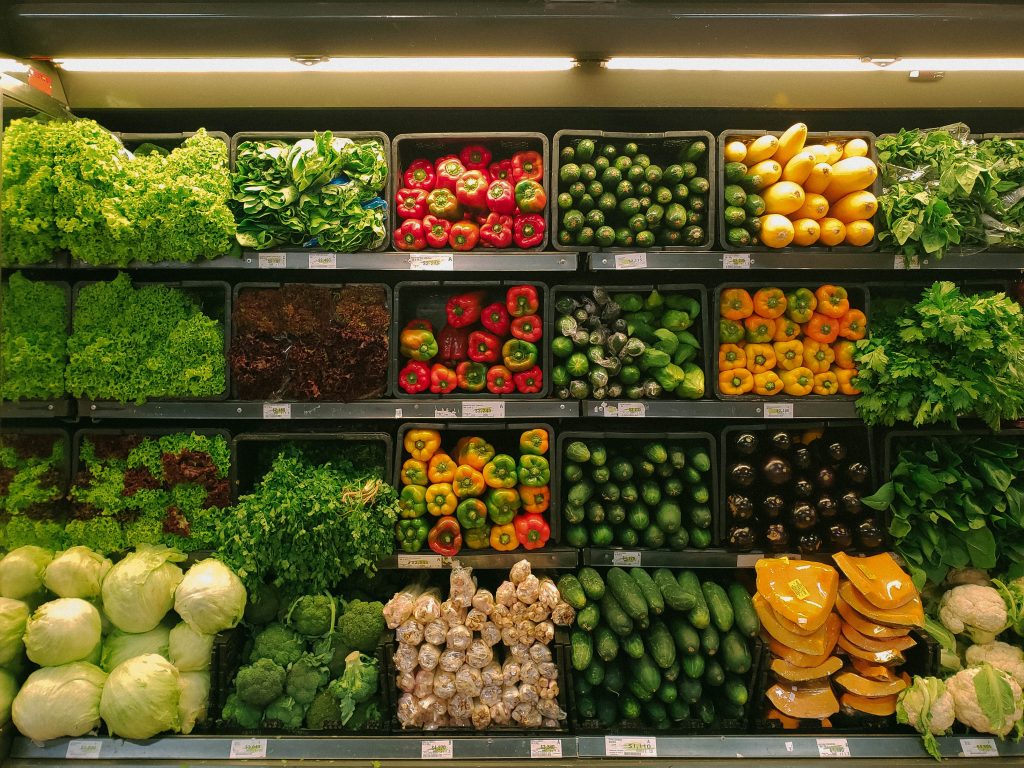
Have you ever let food grow moldy in your fridge simply because you forgot it was there? Or maybe you didn’t have time to cook at home that week and decided to order takeout? Have you ever thrown away a can of soup because it was past the expiration date or a bundle of spinach because it wilted? Have you ever wondered what happens to all of the produce in the supermarket that goes unsold, or dry goods, meat, and dairy that reach their sell by dates?

According to the Food and Agriculture Organization of the United Nations, an estimated 1.3 billion tons of food is wasted globally each year – one third of all food produced for human consumption. To put this in perspective, that’s the equivalent of 2.6 trillion US dollars and is enough to feed ALL of the estimated 815 million hungry people in the world. FOUR TIMES OVER.
Food is being wasted or lost at every stop along the food supply chain, from farm to table to trash can. And in our globalized world where the food supply chain spans continents – you can eat lychees from China on your couch in Kansas or enjoy coffee from Ethiopia in your kitchen in Sydney, the opportunities for loss and waste are abundant.
Food Loss vs Food Waste

“Food loss” refers typically refers to food lost in the earlier stages of production such as during harvest, storage, and transportation. Food is lost when farmers over-plant to compensate for possible bad weather and end up with surplus when the bad weather doesn’t arrive. Food is lost because retailers’ high aesthetic standards for fruits and vegetables means produce that simply isn’t pretty enough never even makes it onto the truck. Food is lost in low-income countries when harvesting technology that isn’t up to par and damages produce, or isn’t able to yield a decent harvest. Food is also lost after harvest in handling, storage, processing, and transport.
“Food waste” on the other hand, refers to items that are fit for human consumption, but thrown away by distributors, retailers, restaurants, and consumers.

In the US, the United States Department of Agriculture assigns grades to many items based on size, shape, texture, and ripeness causing retailers to only stock higher grades of produce. Any produce that doesn’t pass muster is removed from the supply chain and thrown out.

Food is also wasted because of confusion over “best buy,” “sell by,” and “use by” dates. Foods that are close to, at, or beyond these dates are often discarded regardless of edibility.
Additionally, huge quantities of edible food are simply unused by household kitchens and restaurants, and tossed.
According to the World Resources Institute, low income countries suffer from food loss, while in higher income countries, food waste is rampant. For example, in Sub-Saharan Africa, 83% of food is lost during production, handling, storage, and processing, while just 5% is wasted by consumers. And in North America, 32% is lost in those earlier stages while 61% is wasted by consumers.

In addition to all of the food that is lost or wasted worldwide, the resources needed to produce that food are also being wastes along with them. This includes the land for planting, the water and nutrients for growing, the fuel for harvesting and transporting, the energy for storing, and the time and hard work of all of the people involved along the food supply chain.
So, what can you do to reduce food loss and waste?
First, shop locally whenever you can. The shorter the distance your food has to travel, the more likely it will reach your plate and not be lost to damage, expiration, or rot.
Become better informed about what the dates on your food mean. These dates are often set arbitrarily by manufacturers. Just because something in your fridge has passed its best buy date, doesn’t mean it’s inedible. Safe handling and storing of your food will maximize its potential to nourish you.
Don’t buy more than you need and make sure to use up your leftovers. Dinner last night, makes an amazing lunch tomorrow. Also, if you can, compost your food scraps rather than throw them away. You can also donate nutritious, safe, and untouched food to food banks in your area.
As the Earth’s climate shifts, temperatures will rise and catastrophic weather events will become commonplace. The subsequent opportunities for food loss, waste, and ultimately scarcity will have an ever-increasing and frightening impact on our ability to nurture ourselves. The only solution is to change the way we think about and understand our food.



